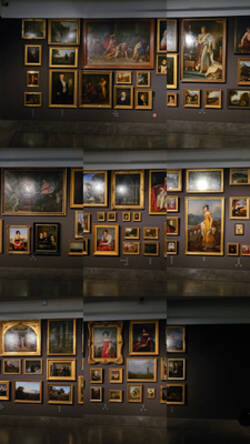On the large, long wall, we are presenting paintings by men and women artists who were also working in Dresden and were contemporaries of Caspar David Friedrich. The works cover the entire spectrum of painting produced in those days, in particular, at the Academy: portraits, still lifes, landscapes, history paintings as well as Christian motifs and themes from the classical world. Friedrich’s fellow artists constantly vied with each other, trying to increase the drama in their works and paint in ever brighter contrasting colours. The comparison with these works underlines Friedrich’s rigorous reduction in his compositions and his subtle use of colour. His landscapes on this wall would look like gaps in the densely set paintings. Hardly surprisingly, then, many contemporary art critics were bewildered by his pictures and complained of their monotony.
The artists shown here include many of Friedrich’s friends and students. The view of Friedrich as a loner has proved remarkably persistent. Yet this is more an image constructed and disseminated after Friedrich’s death, in particular by his artist friend Carl Gustav Carus. In fact, Friedrich had a wide circle of friends and acquaintances. You can also find out more about his networks in the media station in the lobby of this special exhibition.
Incidentally, our presentation here echoes those densely packed hanging of works in the Dresden Academy exhibitions which Friedrich so loathed: “I always find it disagreeable to see a large number of pictures stored or set up like wares in a room or chamber where visitors cannot view each painting separately for itself without having to look simultaneously at four-and-a-half other pictures as well.”
